Removal Procedure
- Relieve the fuel system pressure. Refer to Fuel Pressure Relief .
- Disconnect the negative battery cable.
- Remove the air cleaner outlet resonator. Refer to Air Cleaner Outlet Resonator Replacement .
- Remove the vacuum hose at the fuel pressure regulator.
- Remove the Camshaft Position sensor electrical connector.
- Remove the injector electrical connectors. Push in the wire connector clip, while pulling the electrical connector away from the fuel injector.
- Remove the fuel inlet pipe at the fuel rail. (Use a backup wrench on the fuel rail inlet fitting to prevent it from turning).
- Remove the fuel rail attaching bolts (1).
- Lift the fuel rail assembly (1) from the cylinder head.
- Loosen the fuel return pipe retaining bracket attaching screw (3). (Rotate the retaining bracket (4) to allow fuel pipe to be removed).
- Remove the fuel return pipe (2) from the pressure regulator (1).
- Remove the inlet and the return pipe assemblies. Discard O-ring (5).
- Remove the fuel rail assembly.
Caution: Unless directed otherwise, the ignition and start switch must be in the OFF or LOCK position, and all electrical loads must be OFF before servicing any electrical component. Disconnect the negative battery cable to prevent an electrical spark should a tool or equipment come in contact with an exposed electrical terminal. Failure to follow these precautions may result in personal injury and/or damage to the vehicle or its components.
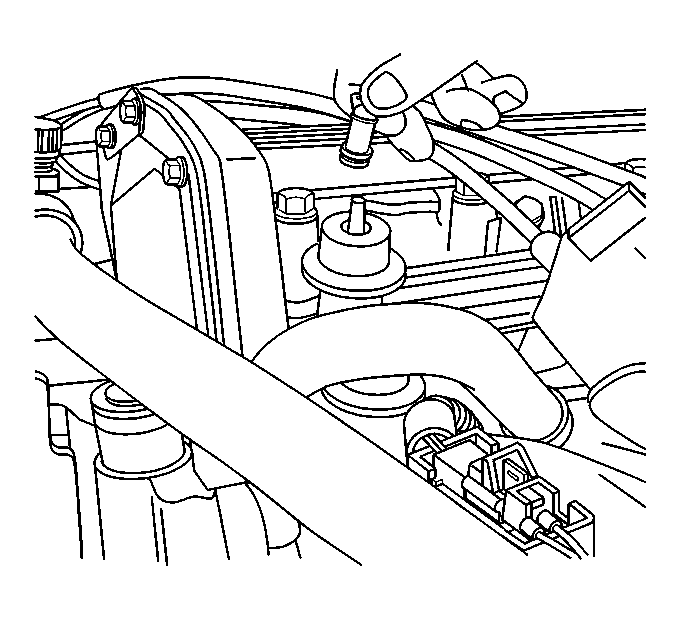
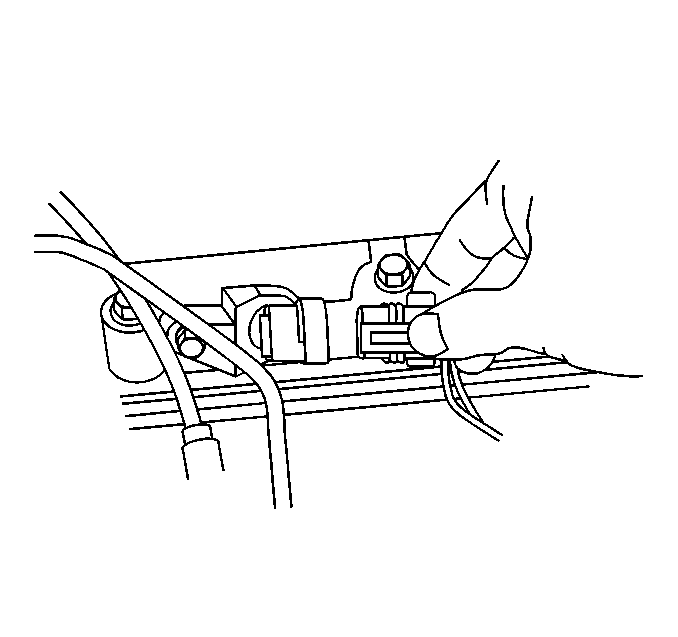
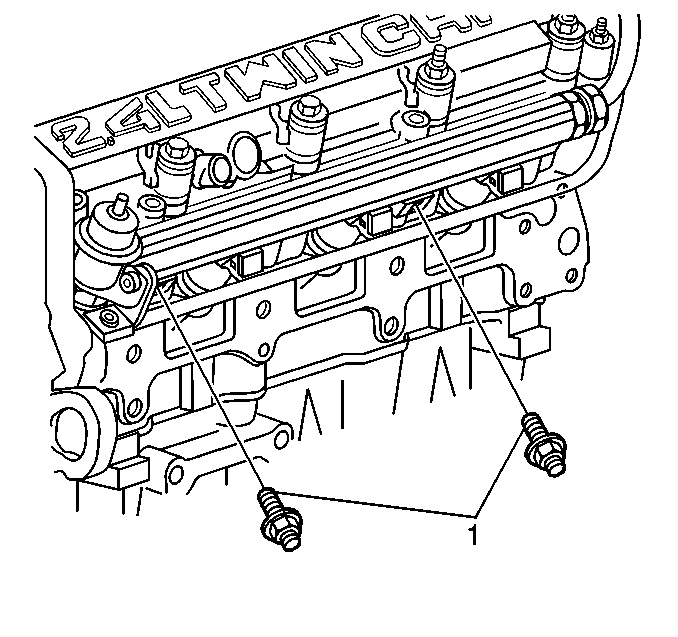
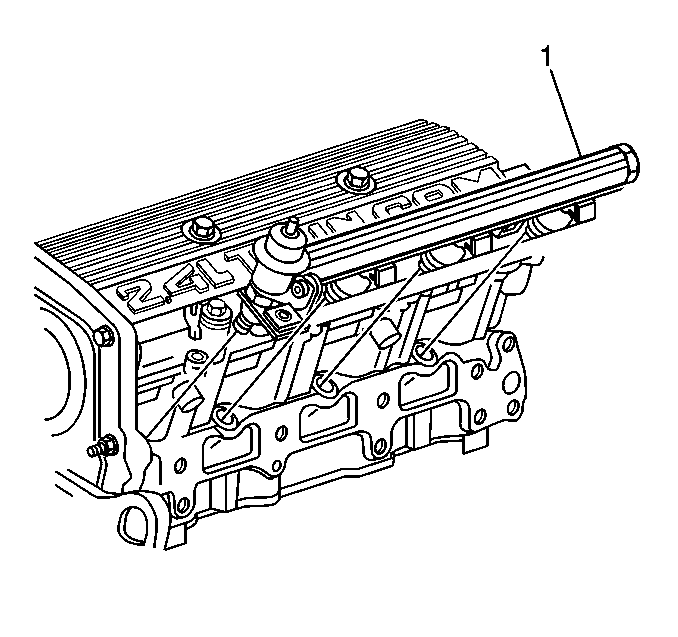
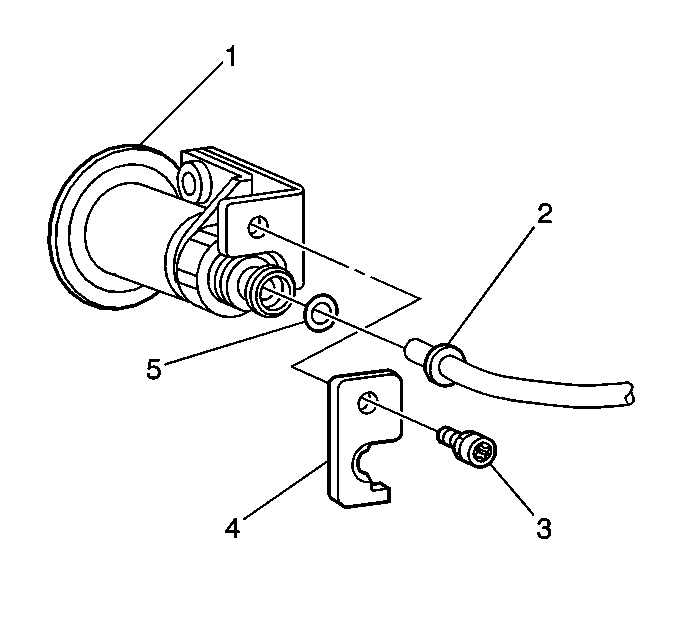
Installation Procedure
- Apply a few drops of clean engine oil to the male end of the fuel pipes before installing.
- Install the fuel return pipe into regulator (2). (Align bracket (4) to retain return pipe).
- Install the fuel rail inlet fitting to the fuel rail.
- Install the fuel rail assembly into the cylinder head (1).
- Install the fuel rail assembly attaching bolts (1).
- Install the fuel injector harness connectors.
- Install the Camshaft Position sensor electrical connector.
- Install the vacuum hose to the fuel pressure regulator.
- Install the air cleaner outlet resonator. Refer to Air Cleaner Outlet Resonator Replacement .
- Connect the negative battery cable.
- Inspect for fuel leaks through the following steps:

Notice: Use the correct fastener in the correct location. Replacement fasteners must be the correct part number for that application. Fasteners requiring replacement or fasteners requiring the use of thread locking compound or sealant are identified in the service procedure. Do not use paints, lubricants, or corrosion inhibitors on fasteners or fastener joint surfaces unless specified. These coatings affect fastener torque and joint clamping force and may damage the fastener. Use the correct tightening sequence and specifications when installing fasteners in order to avoid damage to parts and systems.
Important: Whenever there is not enough thread-locking material on the threads of the fuel outlet pipe bracket screw, apply Loctite® 262 to insure proper locking.
Tighten
Tighten the return pipe bracket screw (3) to 6.0 N·m (53 lb in).
Important: Use a backup wrench on the fuel rail inlet fitting to prevent it from turning.
Tighten
Tighten fuel rail inlet fitting to 30 N·m (22 lb ft)

Important: Lubricate fuel injectors O-rings with clean engine oil before installation.

Tighten
Tighten fuel rail attaching bolts to 26 N·m (19 lb ft).


| 11.1. | Turn the ignition switch to the ON position for two seconds. |
| 11.2. | Turn the ignition switch to the OFF position for ten seconds. |
| 11.3. | Turn the ignition switch to the ON position. |
| 11.4. | Check for fuel leaks. |
